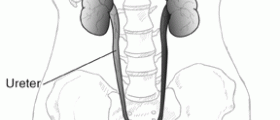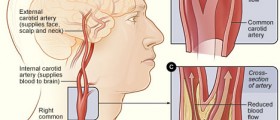What is Dialysis Fistula?
Dialysis fistula is a surgically created connection between the native artery and vein. They are placed in an arm or a leg and they can be made of Dacron, polyurethane, bovine vessels, PTFE, or other materials. This communication medium between the artery and the vein is used routinely in patients who need hemodialysis two to five times per week.
Severe kidney problems are solved either through kidney transplantation or dialysis. Patients who are not candidates for renal transplantation require dialysis several times a week, probably for the rest of their life. This imposes a need for dialysis access, achieved through the introduction of a catheter or through a dialysis fistula.

The preservation of functioning, patent fistulas is one of the major problems that people on long-term dialysis have to face. In fact, 25 percent of hospital admissions for patients on dialysis have been attributed to fistula malfunction and thrombosis.
There are two main types of dialysis fistulas - native arteriovenous fistulas or AVFs and prosthetic hemodialysis access arteriovenous grafts or AVGs. Native fistulas are created surgically by joining the artery and the vein together, through the anastomosis. AVGs are basically artificial vessels, also introduced in a surgical procedure.
- This was a single institution retrospective review of 155 veterans with primary autogenous AVF creation from 2016 to 2018.
- All patients received a duplex flow study evaluation after primary creation. A comparison was made between physical exam (PE) and flow study at 4 to 6 weeks post creation. Sensitivities and specificities of physical exam and duplex flow study were compared head-to-head in predicting unassisted fistula maturation.
- A mature AVF was defined as a fistula that could be repetitively cannulated and provided adequate flow for dialysis. Failure of maturation was defined as an AVF that was never usable for dialysis. An abnormal duplex included thrombosis, stenosis (> 50% on gray scale imaging), inadequate vein diameter (
- There were 53 patients with radiocephalic (RC) fistulas, 41 patients with brachiocephalic (BC) fistulas, and 6 patients with brachiobasilic (BB) fistulas.
- Of patients with a confirmed abnormal duplex ultrasound, 53% had an abnormal PE (sensitivity 53%; PPV 96.3%, P
- In total, 48 fistulas needed reintervention, however only 20 (42%) were associated with an abnormal physical examination. Of those 48 reinterventions, 20 (42%) fistulas exhibited primary assisted maturation (P
It is rare for a dialysis fistula to continue working properly for the entire period of a patient’s dependence on dialysis. Native fistulas, even if they are functioning properly and without problems, last up to three years, after which they need to be replaced.
Prosthetic PTFE grafts last shorter than that - a year or two before they start showing signs of failure or thrombosis occurs. After replacement, secondary native fistulas may last up to seven years, and prosthetic ones no more than two years.
Dialysis Fistula Problems
For prosthetic grafts, problems such as occlusion or fistula failure occur because of the gradual but progressive narrowing of the venous anastomosis. In native fistulas, the most common cause of issues is the narrowing of the outflow vein. Other causes for problems regarding dialysis fistulas include trauma and stenosis.
A failing dialysis fistula should be evaluated through angiography. This is the common approach for all cases except for those where an infection is present. Angiography is used to explore the entire arteriovenous access.
Angiography is highly recommended because, even if stenosis has been diagnosed through an ultrasound, it is vital to detect and treat additional lesions that could potentially cause recurring malfunctions of the fistula.
Patients undergoing hemodialysis need to have their fistulas checked for malfunctions on regular basis.

















Your thoughts on this
Loading...